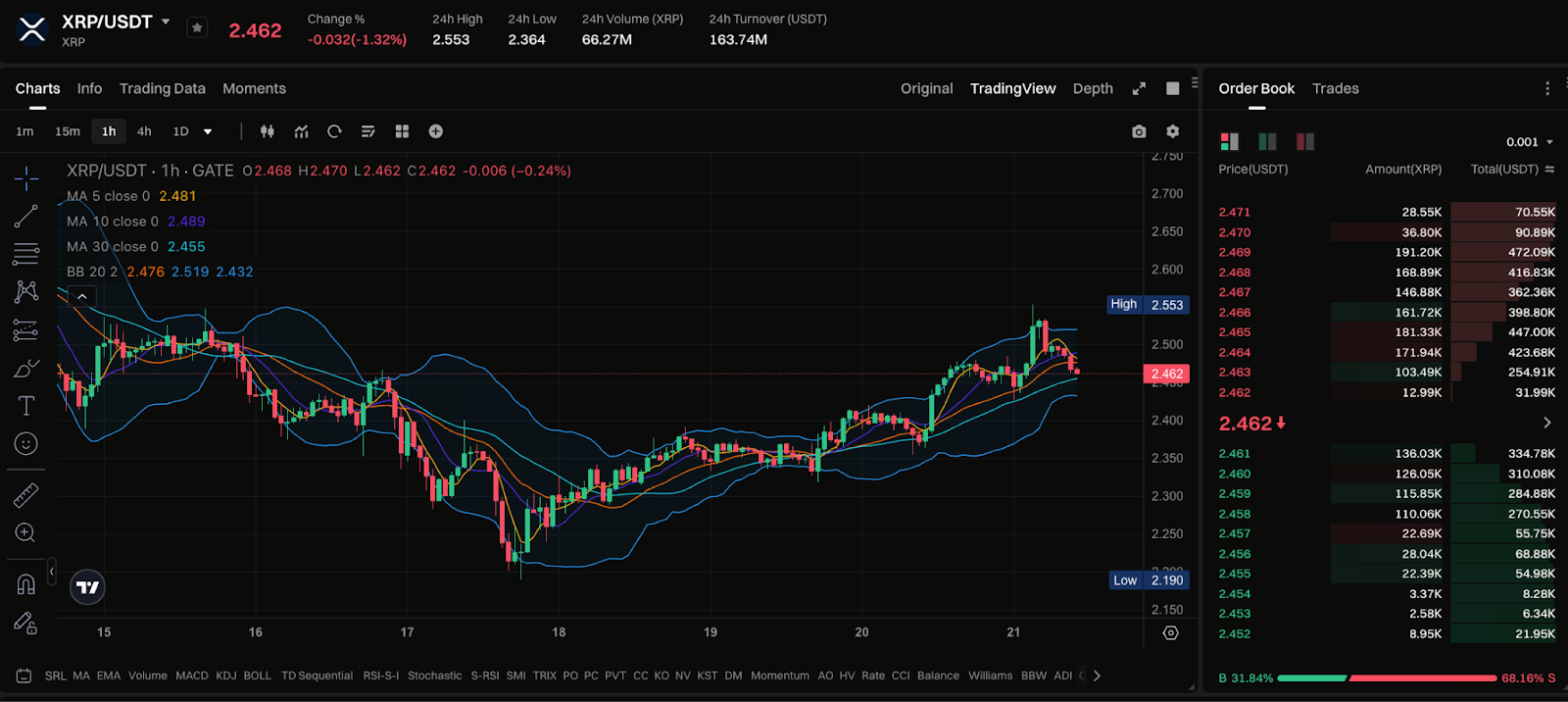Why XRP Is Being Pushed Toward the “Unrealistic” $1000 Expectation
What Is XRP?

Image: https://www.gate.com/trade/XRP_USDT
Ripple Labs developed XRP to enable global cross-border payments. Unlike Bitcoin or Ethereum, XRP specializes in fast settlement and low-cost transfers between banks and payment providers. XRP has a circulating supply in the tens of billions. It consistently ranks among the world’s top ten digital assets.
Why Do People Predict XRP Could Reach $1000?
Market buzz recently focused on claims that “XRP could surge to $1000.” Supporters cite several reasons:
- If Ripple’s payment network achieves widespread adoption by global financial institutions, demand for XRP would rise dramatically;
- Upcoming cryptocurrency bull markets could lift all major tokens, powering strong performance for XRP;
- Increasing regulatory clarity is paving the way for institutional capital;
- Social media amplification has made “$1000 XRP” a viral topic, influencing retail investor sentiment.
Together, these factors have increased enthusiasm among retail investors.
From a Mathematical Standpoint: How Realistic Is This Target?
Fundamentally, a $1000 price for XRP is virtually impossible. If XRP reached $1000, its market capitalization, based on current supply, would exceed the combined value of the world’s largest financial markets. This price target is economically unrealistic. Most rational analyses agree that, even under highly optimistic scenarios, XRP reaching $10 or $20 in the next few years would already be an outstanding result.
In short, this narrative reflects market hype and trending topics rather than sound economic reasoning.
Latest Developments: What Regulatory and Institutional Barriers Exist?
Ripple has made some progress in its legal battles with U.S. regulators, but the overall regulatory landscape remains uncertain. In the U.S., Europe, and Asia, rules for crypto payment networks are still evolving, and widespread adoption is unlikely in the short term. Institutional uptake is lagging expectations; while some banks have piloted RippleNet platform, most are taking a wait-and-see approach.
Therefore, even if Ripple’s technology gains broader acceptance, it does not guarantee that XRP’s price will increase rapidly to $1000.
Why Is Retail Sentiment Rising? What Are the Risks?
Retail investor psychology is often driven by expectations of rapid financial gain. When headlines predicting “$1000 XRP” flood the internet, a FOMO (fear of missing out) dynamic takes hold.
But this speculative frenzy frequently masks significant investment risks:
- If the market lacks sufficient liquidity and real-world adoption, latecomers may end up purchasing at inflated prices;
- If sentiment reverses, selling pressure intensifies and price swings are extreme;
- Novice investors who neglect Position Sizing and Stop-Loss strategies risk amplified losses.
Conclusion:
While talk of XRP reaching $1000 is trending, its underlying logic is weak. For newcomers, understanding the supply-demand dynamics and market structure behind price movements matters far more than chasing extreme forecasts. Rational investment strategies and risk diversification are essential for long-term stability.
Related Articles

2025 BTC Price Prediction: BTC Trend Forecast Based on Technical and Macroeconomic Data

Pi Coin Transaction Guide: How to Transfer to Gate.com

Flare Crypto Explained: What Is Flare Network and Why It Matters in 2025

How to Use a Crypto Whale Tracker: Top Tool Recommendation for 2025 to Follow Whale Moves

What is N2: An AI-Driven Layer 2 Solution
